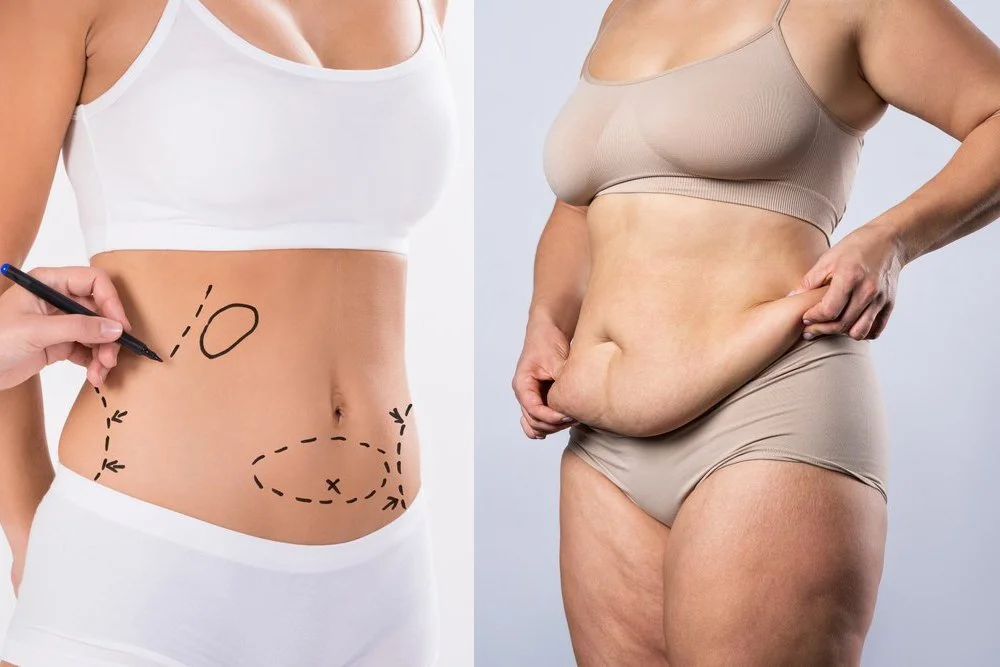Yes, BTM (Body Transformation Method) and Brazilian Tummy Tuck Makeovers have distinct differences. BTM was developed by American surgeons and combines multiple techniques in one operation with higher-positioned incisions. Brazilian approaches prioritize dramatic waist-to-hip ratios and often include buttock fat transfer, reflecting Brazil’s cultural beauty standards. Recovery times vary, with BTM typically requiring 1-2 weeks and Brazilian techniques needing 2-3 weeks for normal activities. Understanding these differences helps you choose the right procedure for your body goals.
Key Takeaways
- BTM combines multiple techniques in one operation, while Brazilian tummy tucks emphasize dramatic waist-to-hip ratios with potential fat transfer.
- BTM typically features higher-positioned incisions compared to the lower-positioned incisions in Brazilian approaches.
- Recovery is generally faster with BTM (1-2 weeks) than with Brazilian techniques (2-3 weeks for normal routines).
- BTM candidates ideally have BMI below 30, while Brazilian approaches can accommodate patients with higher BMI values.
- Cost ranges differ with BTM averaging $8,000-$15,000 and Brazilian tummy tucks typically ranging from $6,000-$12,000.
Understanding the Origins of BTM and Brazilian Tummy Tuck Procedures

While both procedures have gained international popularity in recent years, BTM Plastic Surgery and the Brazilian Tummy Tuck have distinct origins that reflect different surgical philosophies.
BTM origins trace back to the innovative approach developed by American surgeons seeking thorough body contouring solutions. The technique emerged as practitioners recognized that addressing multiple areas simultaneously could deliver more harmonious results.
The revolutionary BTM method emerged when American surgeons discovered comprehensive contouring creates naturally balanced body aesthetics.
You’ll find that BTM emphasizes overall proportion and symmetry.
In contrast, Brazilian origins stem from the country’s cultural emphasis on specific body aesthetics. Brazilian plastic surgeons pioneered techniques that accentuate natural curves while maintaining a slim waistline.
You’ll notice this approach prioritizes dramatic waist-to-hip ratios and focuses intensely on abdominal definition. The Brazilian technique gained momentum as international patients sought the distinctive results popularized by Brazilian beach culture.
Key Procedural Differences Between BTM and Brazilian Approaches
These distinct origins have shaped fundamentally different surgical approaches between BTM Plastic Surgery and the Brazilian Tummy Tuck.
BTM focuses on an extensive body transformation utilizing multiple surgical techniques simultaneously, often including liposuction, muscle repair, and skin tightening in a single operation. Your recovery time is typically longer but requires fewer total procedures.
The Brazilian approach prioritizes specific aesthetic outcomes that align with cultural beauty standards, emphasizing dramatic waist-to-hip ratios and natural-looking results.
You’ll notice Brazilian techniques often incorporate fat transfer to enhance buttock volume while sculpting the abdomen. The incision placement also differs—BTM typically uses higher-positioned incisions while Brazilian surgeons favor lower cuts that accommodate Brazilian swimwear styles.
Each method offers unique advantages depending on your body type and desired results.
Recovery Expectations and Timeframes for Each Technique
Recovery journeys differ markedly between BTM Plastic Surgery and Brazilian Tummy Tuck procedures, reflecting their distinct surgical approaches.
With BTM surgery, you’ll typically experience a shorter recovery timeline of 1-2 weeks before returning to light activities, while full recovery takes 4-6 weeks.
Recovery with BTM is remarkably efficient, allowing light activity after just 1-2 weeks and complete healing within 4-6 weeks.
Brazilian techniques generally require 2-3 weeks before resuming normal routines, with complete healing spanning 6-8 weeks.
Your post-operative care will vary too—BTM patients often need fewer drain tubes and experience less post-surgical fluid accumulation, while Brazilian approaches may require more intensive compression garment use.
Pain management protocols differ as well, with BTM’s tissue-sparing approach potentially resulting in less discomfort than the more extensive Brazilian procedure.
Both techniques require avoiding strenuous exercise for at least six weeks to guarantee peak healing.
Ideal Candidates and Contraindications for Both Procedures
Although both procedures offer transformative results, they’re designed for different patient profiles with specific eligibility criteria. Understanding if you’re an ideal candidate requires evaluating your health status, body composition, and aesthetic goals.
| Consideration | BTM Surgery | Brazilian Tummy Tuck |
| Body Type | Moderate excess skin | Significant abdominal laxity |
| Health Status | Good general health | Good general health |
| BMI Range | Ideally below 30 | Can accommodate higher BMI |
| Contraindications | Smoking, uncontrolled diabetes, pregnancy plans | Severe cardiac issues, clotting disorders, unrealistic expectations |
Before pursuing either procedure, you’ll need a thorough medical evaluation. Certain health conditions represent absolute contraindications overview for both surgeries, while others may simply require optimization before proceeding. Your candidacy assessment will determine which approach best suits your unique circumstances.
Cost Considerations and Insurance Coverage Comparisons
Understanding the financial aspects of cosmetic procedures represents a crucial step in your surgical planning process. BTM plastic surgery typically costs between $8,000-$15,000, while Brazilian tummy tucks average $6,000-$12,000. These ranges vary based on geographic location, surgeon expertise, facility fees, and complexity of your specific case.
Insurance policies generally don’t cover either procedure when performed for cosmetic reasons. However, if you’re experiencing functional issues like back pain or skin infections from excess abdominal tissue, you might qualify for partial coverage.
Many practices offer financing options including medical credit cards, payment plans, and loans to make these investments more manageable.
Remember to request itemized quotes during consultations to understand all cost factors and avoid unexpected expenses during your transformation journey.
Conclusion
BTM plastic surgery and Brazilian tummy tuck makeovers differ primarily in technique, recovery time, and target areas. You’ll need to choose based on your specific body goals and medical history. Remember, these procedures aren’t one-size-fits-all solutions—they’re tailor-made transformations. As the telegraph operators of yesteryear would say: “Consultation is key.” Discuss your options with a board-certified surgeon to determine which approach will best fulfill your aesthetic desires.
